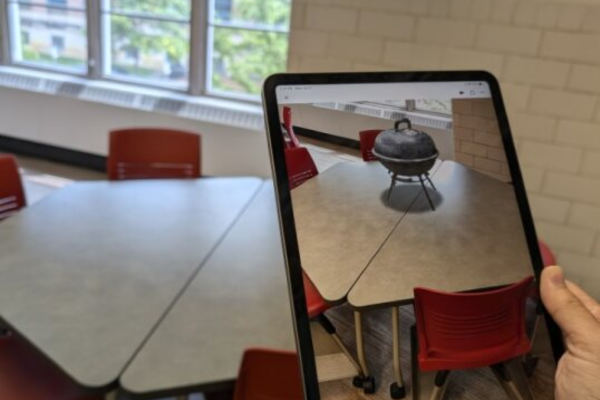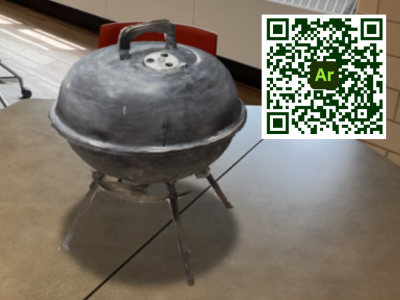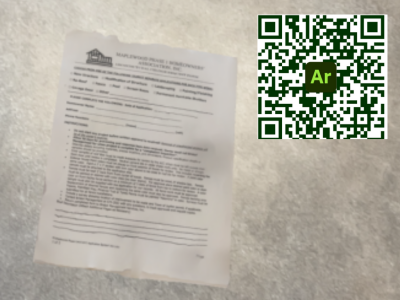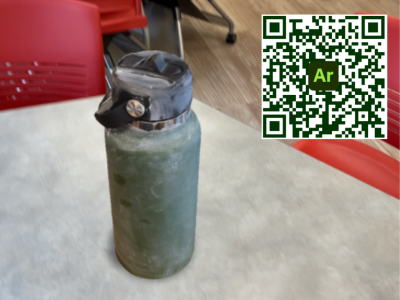Exploring Climate Change Through Technology—and Imagination

When thinking of classes concerning climate change and sustainability, it can be easy to default to typical STEM classes, but Thomas Davis, associate professor of English and affiliated faculty at the Sustainability Institute at The Ohio State University, thinks that’s just a failure of imagination: “If we have the knowledge and we have the technology and capacity to shift the energy system, what's the problem?” According to Davis, the future of our planet isn’t just a question of science. How we think about nature, energy and climate change shapes the actions we take, or fail to take, in response. Those problems, Davis elaborates, “are political, and they're cultural, and they're also imaginative.”
These issues and the conversations surrounding them are exactly what guided Davis’s spring 2025 section of English 3340: Reimagining Climate Change, which aims to explore climate change through the blending of literature, science, and technology. Through this course, students learn to reimagine the future of climate change, challenging not just how we think about the issue, but how we communicate it, and literature in particular provides a valuable medium for discussing these societal problems. “Speculative fiction, science fiction, it makes you flex your imaginative muscles about what could be possible in the future and also what you want,” explains Davis. “It hopefully encourages you to think a little more precisely about why we are where we are.”
English 3340 is a general education course for the sustainability theme and attracts students from across the university, from finance to public health. Davis argues that this mix of disciplines only elevates the importance of the course. “There's nothing that you can do or think about for your career that's not going to be touched by the climate crisis,” emphasizes Davis. “And this class will at least give people some tools to think about that and give them some experience in imagining what the world might look like and what their role in doing something for that world might look like too.”
In bringing together different perspectives, the primary goal of English 3340 is to explore the ways climate change affects fundamental ideas that govern our thinking: nature, the human, growth, future, and time itself. As Davis outlines, the class’s primary goal is learning to rethink these big picture ideas. To do this, students are “reading philosophy, reading some non-fiction, reading a lot of science fiction and speculative fiction that's doing the work of imagining future scenarios and trying to game out what they would look like.”

This wide array of readings and speculation brings complicated, sometimes controversial questions to the fore. Rather than provide all the answers, Davis designs the class to foster active, student-led discussion. He arranges the small, 20-person class into a semicircle, structuring the entire course around open discussion. “I have these things called reading rooms where students will sign up for a day, and they have to come with questions and a specific place in the text to look at and then launch us into discussion.” This leads to more interactive and organic conversations. “We have people changing their mind in real time in class,” explains Davis. “That only happens with that kind of collaborative discussion."

All of this discussion and analysis builds toward the class’s final project: a speculative climate museum, set in 2125. Davis explains: “If you were in 2125 and Ohio looks like how they say it might in the National Climate Assessment Report, what would be changed dramatically, and what would you want to show in a museum to try to explain how we got to 2125?” Drawing inspiration from a variety of sources, such as Postcards to the Future and Carbon Ruins Scotland, Davis works with students to help them develop a 3D ‘artifact,’ either something that exists or something that is made up, alongside a curatorial statement written from 2125. To help with the development of the 3D models, Davis enlisted the help of Jeremy Patterson, a senior graphic designer and instructor at the Advanced Computing Center for the Arts and Design (ACCAD). In discussing how to transcribe photos or AI-generated images into a fully rendered 3D creation in Adobe Studio, Patterson is able to fill in the technological knowledge that Davis admits to lacking: “I can teach them world building. I can teach them about climate change. I can teach them about how to speculate coherently. I can't teach them how to take a phone and create a 3D image, but he can.”
This final project will expand beyond the classroom, as Davis plans to house the artifacts on a website available to the public. “If I'm able to teach future iterations of this class and this goes well, then it could be an additive thing, and could grow pretty significantly over a couple of years,” he says. Outside of the website, he also hopes to use campus as an interactive museum space where students can place QR codes linking their projects around campus, where “people could hit it because they don't know what it is, or you could do a guided walk.”

As the heart of the course, the speculative climate museum builds upon skills students have spent the entire semester cultivating. By reading a variety of texts and science fiction, students learn how to critically speculate about the future, allowing them to effectively move from reader to author when it comes to these complex, imaginative scenarios. The discussion-oriented class structure also helps set students up for success, as by the time they get to this final project, “they already know how to engage with each other.” Davis hopes that, through taking this course, students will walk away with the skills needed to examine and critically discuss climate change. “I want them to be able to think more patiently and robustly about some of the fundamental ideas behind climate change as a phenomenon in the world,” he explains. As climate change continues to shape our world, courses like English 3340 remind students that solutions require more than just science—they demand imagination. Above all else, Davis hopes students will be able to hear debates about climate change and “ask the questions behind the questions.”
